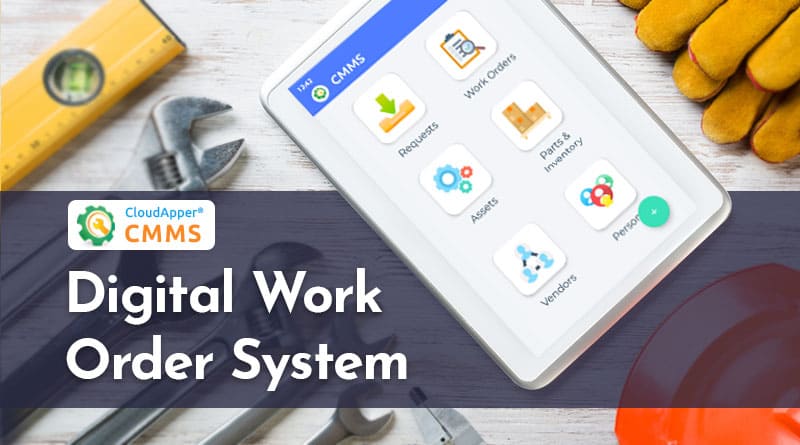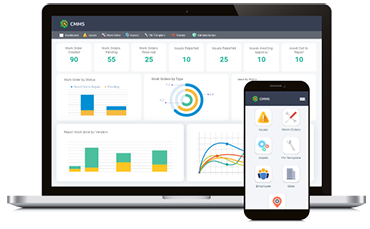How to Increase Efficiency using a Digital Work Order System
It is crucial to first grasp what a working order really means before we talk about how a digital work order system may enhance efficiency. The aim of a work order system, a work ticket system, and a job request procedure is essentially the same in every industry: to offer visibility for all the components of the working life cycles, work, materials, comments, timing, work tracking, and other vital information. This enables teams to see what work has been done, what the focus is now on, and what work will be needed in the future.
The Traditional vs. Digital Work Order Management Process
Speed offers a competitive edge in the modern business climate. This advantage is reduced by the burdensome paper flow between technicians, managers, owners, and departments of accounting and billing. Additional chances are created by organizing job request forms manually and moving paper documents to the endorsement or billing reasons. This makes it competitively disadvantageous for organizations, which rely on this workflow.
Dependence on spreadsheets poses issues of its own, particularly when it comes to the user right management, billing, and invoicing.
Here’s an example:
A hospital or university facility manager is often responsible for a host of tasks. This could include the coordination of work orders, the management of projects outside contractors, and the coordination of accounting and budgeting systems among others. If this person receives a phone call for maintenance, he or she must enter the order manually into a spreadsheet and then summon a repair service professional to make the repair. The technician is responsible for communicating the information if a new part is required for replacement.
If it is not received from the manager coordinator or if he or she misses the spreadsheet, significant information about the necessary part, who ordered it, etc. will be lost. And if there are no correct user constraints in the spreadsheet, useful information can be unintentionally overridden. All this dramatically minimizes the response time of the facility coordinator and eventually the pace at which work may be accomplished.
These challenges can be solved via the digital work order system.
Minimizing errors with Work Order Software
The major focus of a digital work system is on maintenance tracking. It incorporates all the components in the working life cycle – from scheduling to assignment to completion and consolidates them into one accessible bucket.
An automatic working order system makes it easy to adhere to best practices for order management and optimizes staff productivity by reducing the flow of documentation or the need to update sheets manually. It accelerates approval, invoicing and billing, and interaction with contractors. Most critically, It reduces the chances of human error.
If, for example, the facility coordinator used a digital work order system, he might easily have requested maintenance using a web app rather than making a phone call. He might have delegated the assignment to a technician who could update the work status, all from the app. If a new device was needed, the technician would be able to make a note of the digital order, giving all updates on the progress of the job in real-time.
It is no surprise that almost any firm that provides services to internal teams or externally to customers can benefit from digitizing the process of work order management.
Industries that Benefit from Work Order Management
Almost any company or organization, providing any maintenance service of any kind, can benefit from using work order management software to digitize their job management.
Medical Equipment Maintenance, Biopharma, and Life Sciences
The software for order management is appropriate for medical equipment providers including X-ray and imaging machines and, dental equipment, pharmaceutical laboratories, hospitals, and medical clinics. When work order management is digitalized, patient safety measures undertaken by the FDA and the preventative maintenance requirements established by the ECRI Institute are easier to meet.
Many regulatory authorities audit healthcare service providers to ensure that equipment functions correctly. Providers using a digital order system can offer correct service proof on time. These advantages will be more valuable when the healthcare regulatory environment continues to develop and become more complex.
Manufacturing
The global industrial motor supplier Menzel Elektromotoren has recently been converted to a digital work order system to reduce response times and increase the quality of its operational processes. All workers now have access to a unified database with real-time information on all maintenance work to be carried out. This level of transparency has enhanced the agility and equipment of the nearly century-old company in the technology-driven manufacturing sector.
Maximizing the uptime of equipment is essential for Menzel and other major manufacturers. When equipment has dropped, manufacturing ceases and operators get idle or inefficient, leading to loss of revenues. Work order management software enables in-time reporting to allow operators to report failures to the maintenance department quickly and accurately.
It provides technicians with a history of service equipment so that they can diagnose and repair equipment promptly. It also helps financial departments and executives to be proactive rather than reactive, so that replacing equipment and budgeting may be forecast appropriately.
Property Management
A digital facility management work order system is a benefit for anyone who manages maintenance in multiple buildings, whether it be a hospital, a university, or a complex apartment. It allows managers to save time on requests and to accomplish other critical activities.
Work order software systems solutions generally offer a user portal, minimizing the need to make telephone calls or email to make maintenance requests and reducing the need to make “status checks” calls or emails. Instead, employees and subcontractors can enter and update software requests effortlessly.
Property managers can immediately see what has been done and what is upcoming or past due. In addition, recurring work orders can be automatically placed to automate prevention requests for maintenance which will ultimately lengthen equipment life and make sure that simple maintenance is completed, avoiding costly repairs in the future.
Food Services and Franchise Management
Restaurants are obliged to keep cooking and food storage equipment to maintain high performance. As with the healthcare industry, laws constantly require planned maintenance of equipment and frequent inspections of eateries. Managers and owners can maximize uptime of equipment with a digital work order management system and conveniently plan and track fire requests and security system installation.
Other Industries that Benefit
Managed IT and telecommunications service providers and service providers in the commercial field and telecom industries can use work order software to record and manage events and help accurately set customer and technician expectations properly. Technicians can enhance workflow operations and improve their productivity and effectiveness.
Digital customer services agreements track times, retainers, and all-inclusive agreements, and equipment tracking capabilities upgrade all of the stakeholders when troubleshooting is necessary or customer infrastructure change is required. Additionally, software integrations such as QuickBooks, FreshBooks, Xero, and other administrative and accounting backend solutions contribute to an improvement of the payment process.
Work orders management software optimizes workflows and boosts efficiency within the enterprise-level organization and service providers in almost all industries, including:
- Heating, ventilation, and air conditioning
- Plumbing
- Public utilities
- Churches
- Schools
- Farms and agribusinesses
- Research laboratories
- Casinos
- Public transport
- Improving Productivity at Every Stage
In every phase of the working life cycle, organizations benefit from the right software.
Customize and Optimize for Complete Control
There are never two identical organizations. Even if work-life cycles are similar, elements such as approval, billing, and checking completion frequently vary. Fortunately, CloudApper’s CMMS and Facilities Management software may be customized to match the unique demands of your firm. In order to track and find all important data, we enable an endless amount of customization choices. You may even alter the status color of a work order to enable or disable the functionalities with a design editor to suit your preferences.
A rising number of companies are going paperlessly in the digital age and for good purpose. Traditional work order management offers too much space for error maybe they lost or forgotten, request that aren’t processed properly, or waste of time while waiting for updates for work orders all of which can lead to lost revenue.
Sadly, many firms have never taken time, often because they don’t know where to start, to examine their work order management systems. Oftentimes we recommend that, if this sounds like you, you collect all necessary stakeholders and map an ideal workflow. It could be so easy as to complete, the remark “It would be great if Contact us at CloudApper if you want to learn more.


















